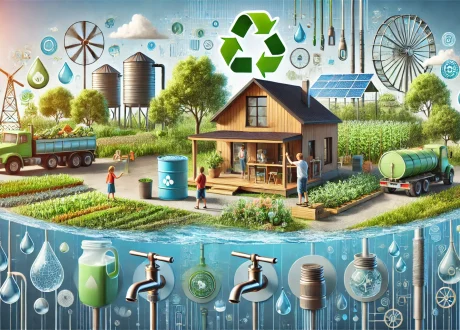
Water Conservation: 7 Simple Ways to Save Water at Home and in Your Business
Water is one of our most precious resources, yet it is often wasted without thought. ...

The Living Planet Report 2024 uncovered that 76% of Africa’s wildlife populations declined over 50 years.
Over the past 50 years (1970–2020), the average size of monitored wildlife populations has shrunk by 73%, as measured by the Living Planet Index (LPI). This is based on almost 35,000 population trends and 5,495 species of amphibians, birds, fish, mammals and reptiles. Freshwater populations have suffered the heaviest declines, falling by 85%, followed by terrestrial (69%) and marine populations (56%).
At a regional level, the fastest declines have been seen in Latin America and the Caribbean – a concerning 95% decline – followed by Africa (76%) and the Asia and the Pacific (60%). Declines have been less dramatic in Europe and Central Asia (35%) and North America (39%), but this reflects the fact that large-scale impacts on nature were already apparent before 1970 in these regions: some populations have stabilized or increased thanks to conservation efforts and species reintroductions.
Habitat degradation and loss, driven primarily by our food system, is the most reported threat in each region, followed by overexploitation, invasive species and disease.
Other threats include climate change (most cited in Latin America and the Caribbean) and pollution (particularly in North America and Asia and the Pacific). By monitoring changes in the size of species populations over time, the LPI is an early warning indicator for extinction risk and helps us understand the health of ecosystems.
When a population falls below a certain level, that species may not be able to perform its usual role within the ecosystem – whether that’s seed dispersal, pollination, grazing, nutrient cycling or the many other processes that keep ecosystems functioning. Stable populations over the long term provide resilience against disturbances like disease and extreme weather events; a decline in populations, as shown in the global LPI, decreases resilience and threatens the functioning of the ecosystem.
This in turn undermines the benefits that ecosystems provide to people – from food, clean water and carbon storage for a stable climate to the broader contributions that nature makes to our cultural, social and spiritual well-being.
The nations of the world have set global goals for a thriving, sustainable future, including halting and reversing the loss of biodiversity (under the Convention on Biological Diversity, or CBD), capping global temperature rise to 1.5ºC (under the Paris Agreement), and eradicating poverty and ensuring human well-being (under the Sustainable Development Goals, or SDGs). But despite these global ambitions, national commitments and actions on the ground fall far short of what’s needed to meet our targets for 2030 and avoid the tipping points that would make achieving our goals impossible.
Approaching climate, biodiversity and development goals in isolation raises the risk of conflicts between different objectives – for example, between using land for food production, biodiversity conservation or renewable energy. With a coordinated, inclusive approach, however, many conflicts can be avoided and trade-offs minimized and managed. Tackling the goals in a joined-up way opens up many potential opportunities to simultaneously conserve and restore nature, mitigate and adapt to climate change, and improve human well-being.
اترك تعليقا